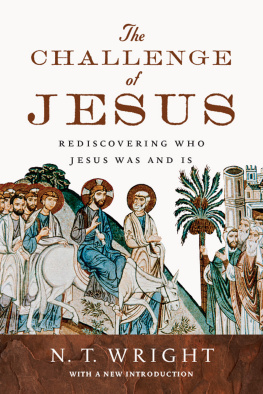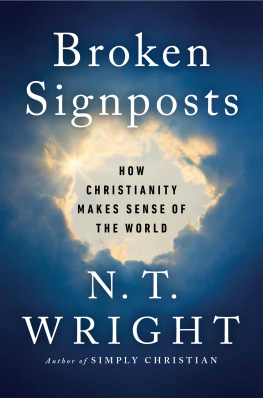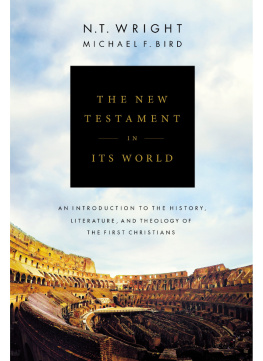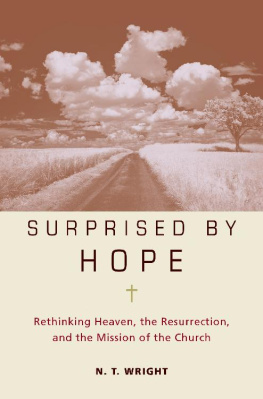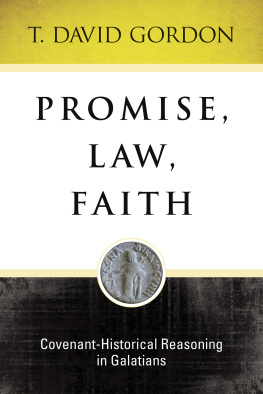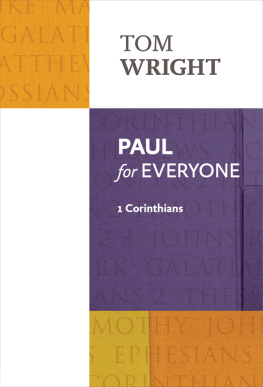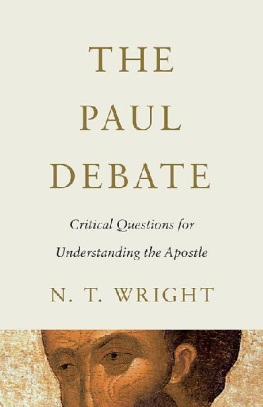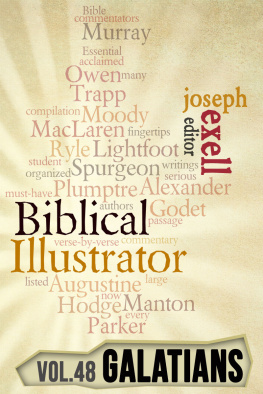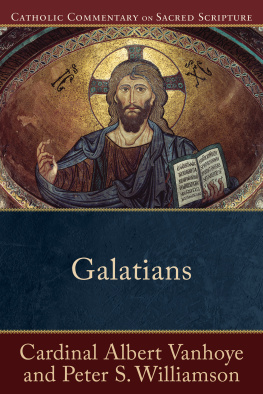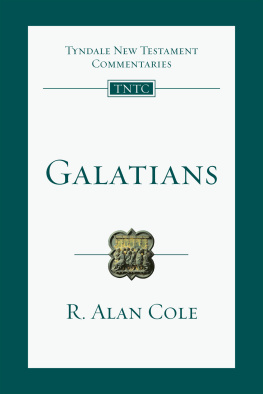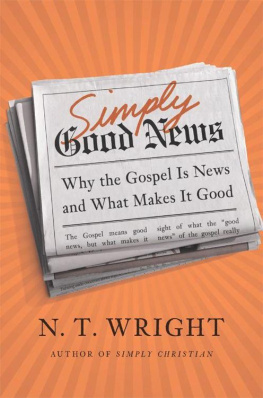Sommaire
Pagination de ldition papier
Guide
GALATIANS
10 STUDIES FOR INDIVIDUALS OR GROUPS
N. T. WRIGHT
WITH DALE & SANDY LARSEN
InterVarsity Press
P.O. Box 1400, Downers Grove, IL 60515-1426
World Wide Web: www.ivpress.com
E-mail:
2010 by Nicholas Thomas Wright
All rights reserved. No part of this book may be reproduced in any form without written permission from InterVarsity Press.
This study guide is based on and includes excerpts adapted from Paul for Everyone: Galatians and Thessalonians, 2002, Nicholas Thomas Wright. All Scripture quotations, unless otherwise indicated, are taken from the New Testament for Everyone. Copyright 2002-2008 by Nicholas Thomas Wright. Used by permission of SPCK, London. All rights reserved.
InterVarsity Press is the book-publishing division of InterVarsity Christian Fellowship/USA, a student movement active on campus at hundreds of universities, colleges and schools of nursing in the United States of America, and a member movement of the International Fellowship of Evangelical Students. For information about local and regional activities, write Public Relations Dept., InterVarsity Christian Fellowship/USA, 6400 Schroeder Rd., P.O. Box 7895, Madison, WI 53707-7895, or visit the IVCF website at .
Cover design: Cindy Kiple
Cover image: Jean Pierre Pieuchot/Getty Images
ISBN 978-0-8308-6919-0 (digital)
ISBN 978-0-8308-2189-1 (print)
This digital document has been produced by Nord Compo.
GETTING THE MOST
OUT OF GALATIANS
I magine youre in South Africa in the 1970s. Apartheid is at its height. You are embarked on a risky project: to build a community center where everybody will be equally welcome, no matter what their color or race. Youve designed it; youve laid the foundation in such a way that only the right sort of building can be built. Or so you think.
You are called away urgently to another part of the country. A little later you get a letter. A new group of builders are building on your foundation. They have changed the design, and are installing two meeting rooms, with two front doors, one for whites only and one for blacks only. Some of the local people are mightily relieved. They always thought there was going to be trouble, putting everyone together like that. Others, though, asked the builders why the original idea wouldnt do. Oh, said the builders airily, that chap who laid the foundation, he had some funny ideas. He didnt really have permission to make that design. Hed got a bit muddled. Were from the real authorities. This is how its got to be.
That was the sort of situation in which Paul found himself, almost two thousand years ago in what is now south central Turkey. He was building with people, not bricks and mortar, laying the foundation of the good news. The one creator God had unveiled his long-awaited plan for the world in his son Jesus who was executed by the Romans but raised by God. The good news doesnt end there either. Jesus death and resurrection mean that God is now building a new family, a single family, a family with no divisions, no separate races, no Jews at this table and Gentiles at another.
Afterward others came in saying Paul didnt really know what he was doing. He didnt have proper authority from the apostles in Jerusalem. Yes, we all believe that Jesus is the Messiah, they said; but we cant have Jewish believers and Gentile believers living as though they were part of the same family. If the Gentile believers want to be part of the real inner circle, they have to become Jews first.
Paul was so incensed that he wrote a sharp letter to the Galatiansone of the first, perhaps the very first, that Paul ever wrote to one of the young churches he planted on the eastern rim of the Mediterranean. (For more on this letter also see my Paul for Everyone: Galatians and Thessalonians, published by SPCK and Westminster John Knox, on which this guide is based.) That means it is among the very earliest documents we possess from the beginning of the churchs existence.
Through this guide, prepared with the help of Dale and Sandy Larsen for which I am grateful, we will see a group of people already full of life, bubbling with energy, with questions, problems, excitement, danger and, above all, a sense of the presence and power of the living God who has changed the world through Jesus and is now at work in a new way by his Spirit. We all look for those same qualities to touch us as well as we delve more deeply into them.
SUGGESTIONS FOR INDIVIDUAL STUDY
1. As you begin each study, pray that God will speak to you through his Word.
2. Read the introduction to the study and respond to the Open question that follows it. This is designed to help you get into the theme of the study.
3. Read and reread the Bible passage to be studied. Each study is designed to help you consider the meaning of the passage in its context. The commentary and questions in this guide are based on my own translation of each passage found in the companion volume to this guide in the For Everyone series on the New Testament (published by SPCK and Westminster John Knox).
4. Write your answers to the questions in the spaces provided or in a personal journal. Each study includes three types of questions: observation questions, which ask about the basic facts in the passage; interpretation questions, which delve into the meaning of the passage; and application questions, which help you discover the implications of the text for growing in Christ. Writing out your responses can bring clarity and deeper understanding of yourself and of Gods Word.
5. Each session features selected comments from the For Everyone series. These notes provide further biblical and cultural background and contextual information. They are designed not to answer the questions for you but to help you along as you study the Bible for yourself. For even more reflections on each passage, you may wish to have on hand a copy of the companion volume from the For Everyone series as you work through this study guide.
6. Use the guidelines in the Pray section to focus on God, thanking him for what you have learned and praying about the applications that have come to mind.
SUGGESTIONS FOR GROUP MEMBERS
1. Come to the study prepared. Follow the suggestions for individual study mentioned above. You will find that careful preparation will greatly enrich your time spent in group discussion.
2. Be willing to participate in the discussion. The leader of your group will not be lecturing. Instead, she or he will be asking the questions found in this guide and encouraging the members of the group to discuss what they have learned.
3. Stick to the topic being discussed. These studies focus on a particular passage of Scripture. Only rarely should you refer to other portions of the Bible or outside sources. This allows for everyone to participate on equal ground and for in-depth study.



